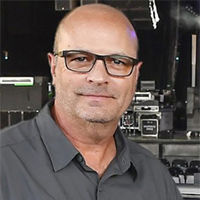In “Mixing For The Boss,” I discussed a burden we all experience as audio engineers: the unenviable task of mixing front of house for an artist while “influential” friends, family members or managers hover over our shoulder. Their opinions and comments, while at times accurate and possibly even helpful, can put us in a tricky position, especially if the advice is meant to favor their friend or family member in a “decibel-tory” way. (You get my drift!)
I wrapped up that previous article noting that this isn’t always the worst thing, because we can always take or leave that advice at our discretion. But how do we, as FOH engineers hired to make the artist sound great, approach advice given from that artist directly? And how does one handle said advice if it causes us to stop dead in our tracks and say, “Ah, nope – that’s not a good idea at all.”
The pro audio community is really quite small, and tales of certain legendary performers and their “signature sounds” get around fairly quickly. When you’re in a room at the AES convention and seven FOH engineers are telling the exact same story about a singer demanding the application of “ample amounts” of 8-second reverb to his vocal to make it sound “beautiful,” you can piece together a pattern. You may also learn that some (if not all) of those seven audio engineers were either relieved of their duties for “insubordination” or decided to walk away from the gig because of irreconcilable differences.
So, what’s the solution? Do we:
A) Look the other way and take the fat paycheck while telling ourselves the 8-second reverb tail with +6 dB of 10 kHz probably won’t haunt our dreams?
B) Nudge the reverb down in the mix and shorten the decay time a bit so people stop dropping by the FOH mix position and pleading with us to “Turn the flipping echo down?”
C) Attempt one more professional conversation with the boss to reiterate that while the other elements of the mix are really pretty great, this “reverb thing” could be improved?
D) Become an accounts manager for an audio company, never mix a show again, and go to next year’s AES convention and add our name to the list of storytellers?
Tough choices, for sure. I use this true-to-life example of excessive reverb on the lead vocal, but there are many other audio “differences of opinions” that arise between artists and engineers. These differences can lead to unwanted discussions after “board tape” reviews late at night. Now that we have YouTube with fans recording shows on their phones from the 99th row of the venue and posting them instantaneously, there is way more opportunity for the artist to critique the mix in a 3 am text message while we’re trying to get some much-needed sleep in our bunk.
Asking The Question
In an attempt to take the bull by the horns, I often ask artists when I’m hired if there’s a particular album or live recording that captures the way they would like me to mix their show. If nothing else, it lets them know I truly care about their interpretation of how the show should sound instead of just mixing to my taste.
I find artists are sometimes perplexed by this question and can’t always point to one piece of recorded work that captures the live feel they’re hoping to achieve, so they kind of generalize and answer with, “Just make us sound like us – only louder.” Fair enough. That’s my initial approach anyway, and it almost always works out just fine.
Problems can arise, however, when we’re mixing by instinct, translating the mix as we’re feeling it, and artists begin questioning our work. Maybe they don’t like what they’re hearing on stage (which is sometimes unfair, seeing as how they’re behind the PA system), or it’s comments they’re receiving from friends or colleagues.
However they arrive at the point of not trusting what we’re doing out there, it’s a trip down the wrong road and hopefully together we can take the first exit, refuel and get some snacks. If they’re not happy, eventually we won’t be happy. This is a rock-solid guarantee that often ends poorly for the engineer.
In the end, we hope our intuition regarding the sound we amplify for the listeners is in line with what the band would want to hear if they were able to come out front. If mixing the show at 98 dBA feels just right but the band wants it at 106 dBA, tough times may be on the horizon. Or the low end is right where it should be to musically hold the mix together, but the artist wants to steam-roll the first 30 rows, perhaps the wrong person is behind the console for this particular artist.
Someone’s Gonna Do It
In the end, we’re hired to give bands what they want. If they want a result that is way, way off from a quality sounding mix, they may reduce our options by handing us a plane ticket, but if they feel we deserve more time to “get it together,” we can choose either a nice paycheck with a side of humility or exit with our pride intact in hopes of finding another project that appreciates our skillset.
Quirky or difficult artists are going to find someone to mix the show. If the quality of audio they seek doesn’t measure up to our standards, we can always walk away, leaving our replacement as the one with the hands on the faders while the patrons come by voicing their displeasure.
Perhaps at a future audio convention you’ll meet this successor and share a story and a laugh (and maybe the phone number of a good therapist).















